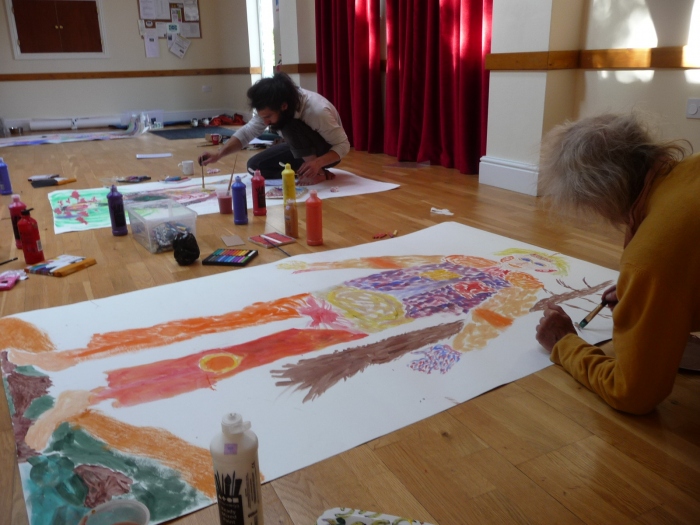Using art to convey our beliefs and feelings is the most ancient form of expression, allowing us to communicate thoughts we might not be able to articulate otherwise. For over 25,000 years, from the earliest humans creating cave paintings featuring animals and handprints, people have used imagery to connect with the world and with themselves.
This expression through creating imagery has been shown to have many physical and psychological effects, from reducing blood pressure and depression through to improving mood. It is widely acknowledged that creating art is a good way to visually communicate thoughts and feelings when it is difficult, or too painful, to put into words. Even just viewing art can have far reaching physical effects; reducing pain, boosting the immune system and aiding recovery.
At first, lets look at how art can help us heal physically. In one study, it was found that women who were undergoing treatment for breast cancer experienced significantly fewer side effects when they also engaged in creating artwork, than those who did not. In another study of those with neurological conditions, including survivors of a stroke, a number of case examples provided very strong evidence that creating art helped the survivors to recover aspects of their cognitive functioning; such as attention, spatial processing, sequencing and planning.

There is also evidence that the act of viewing art can help us to heal. For example, a study into the effect of visual stimuli on pain thresholds and tolerance found that there was a significant increase in the pain threshold and pain tolerance levels in the patients included. The study feels so strongly that art can aid in the healing of patients experiencing pain that they recommend to nurses and doctors using visual stimuli, such as paintings and drawings, as a supplementary method of pain relief.
As for how viewing art can help us to heal our minds, a study carried out by the University of Berkley found that most of the 200 students they tested who had viewed famous artworks in tourist destinations such as the Sistine chapel, had incredibly low levels of cytokine. Cytokine levels are important, as when they are elevated it can produce feelings of depression. Therefore the low levels that viewing awe-inducing works of art can produce could be a crucial breakthrough for the treatment of depression.
Participation in the creation of artwork also has a marked affect on the ability of our minds to not only heal, but also to deal with incredibly stressful and upsetting situations. In a study which tested the efficacy of arts intervention with caregivers of family members with cancer, it was found that not only did the caregivers find welcome relief in the act of creating the artwork, but they also reported significantly reduced stress, lowered anxiety, and increased positive emotions.
The wide-ranging effects of both creating and experiencing art cannot be overstated. As multiple studies have shown, art really can help our minds and bodies to heal, cope with illness and pain, as well as relieve depression and stressful situations
Jamie Morris
